ROLE AND TASKS OF THE SNIPER
“Locate, observe and destroy key enemy personnel and equipment with direct or indirect fire.”
Because they can appear out of nowhere to strike with such surgical precision, Snipers have the ability to render elements of an enemy unit unwilling to move, through panic and fear and cause a consequent reduction in the tempo of enemy operations.
This is only possible through the correct selection and training of snipers; the provision of the necessary equipment to support their activities and, most importantly, a thorough understanding of how they should be tactically employed by commanders at all levels.
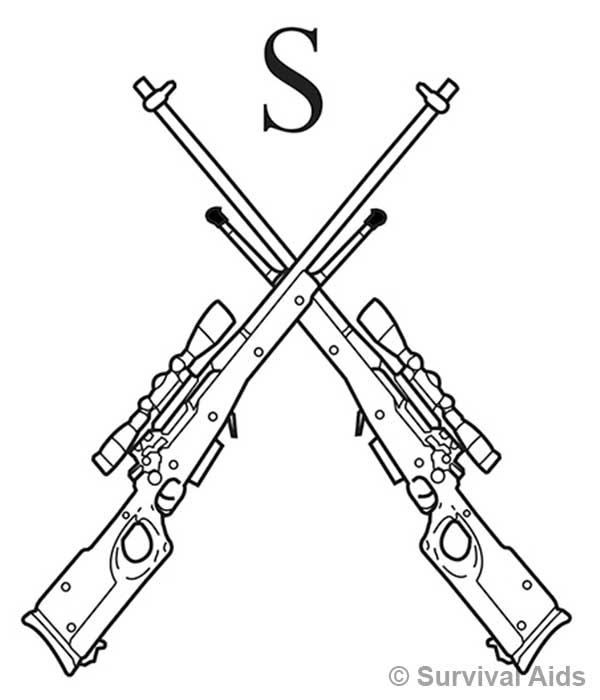
BACKGROUND
The sniper platoon forms part of the ISTAR group and consists of multi-skilled soldiers with reconnaissance and targeting skills.
They can operate as role-specific teams or form groups in order to mix capabilities, e.g. sniper pair, recce team and MFC.
Snipers play an important part in the ISTAR group as, through their training and issued equipment, they have both information gathering and targeting capabilities.
PLATOON COMMANDER
The platoon commander advises the chain of command on all matters in relation to sniping. He commands and conducts sniper platoon-level operations and plans and coordinates sniper platoon training. Along with the platoon second-in-command, he is responsible for the administration of the sniper platoon.
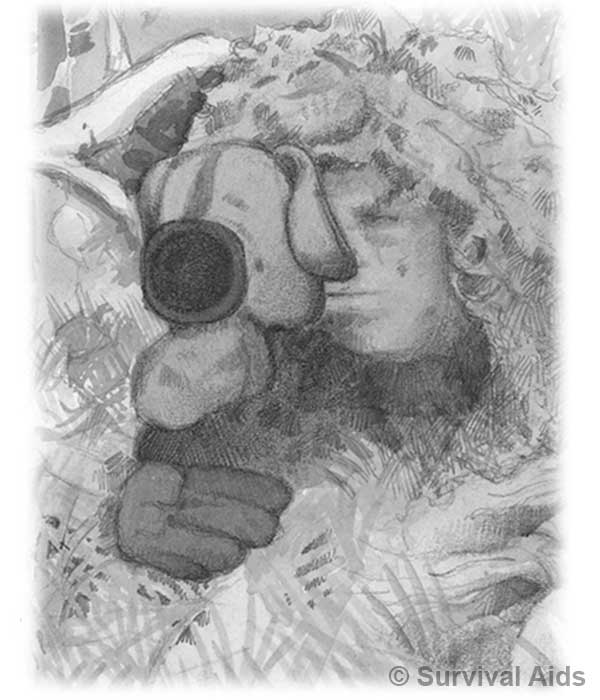
PLATOON 2IC
The platoon 2ic is responsible for the administration of the sniper platoon. He attends the sniper platoon commanders course so he can take on the role of the platoon commander should the platoon commander be disjointed from the platoon. This dual role aids the continuity of command as the platoon 2ic gains experience and is able to progress on to undertaking the role of platoon commander.
SECTION COMMANDER
The section Commander commands and conducts sniper section operations. He is responsible for the sniper training under guidance from the platoon commander. He is also responsible for the sniper section administration in conjunction with the platoon sergeant and section 2ic.
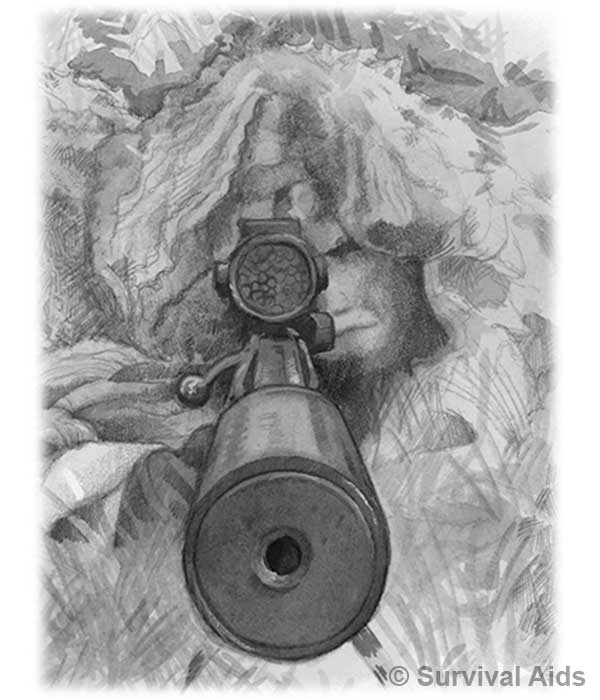
SNIPER (NUMBER ONE)
The sniper number one is equipped with the L11A3 And engages targets designated by the number two. He should be capable of achieving a first round hit at 900m and provide harassing fire up to 1500m.
SNIPER (NUMBER TWO)
The number two within the sniper pair, commands the pair prioritising the target and providing the firing solution for the number one. He is responsible for the close protection of the pair and also must be in a position to engage opportunity targets at less than optimum range of the L115A3. The number two is the link to the chain of command and is likely to be senior in rank to the number one.
Tasks
In addition to their normal role, Snipers have the following tasks in all operations: Disrupt enemy command and control by engaging selected enemy targets with either direct or indirect fire. Neutralise the enemy by preventing movement and use of weapons by using either direct or indirect fire.
Conduct surveillance from observation posts or temporary positions in order to gather and report timely and accurate information, which is swiftly passed up the chain of command.
Request, call in and control indirect fire in support of a wider offensive support (OS) template or fire plan.
Neutralise enemy snipers by advising on countersniper measures and by conducting countersniper tasks/ operations.
PRINCIPLES OF EMPLOYMENT
The following principles must be observed when employing snipers: Grouping. The minimum grouping should be a sniper pair and will operate where they can provide and be provided with mutual support. This mutual support can be provided by other snipers or form manoeuvre sub units. To ensure that snipers have mutual support a six-man sniper section will consist of three pairs.
Endurance. As a planning figure, a sniper pair should be able to provide observation with an ability to deliver a precision strike onto a target for 48 hours without resupply. A number of factors can affect this:
- - Weather conditions
- - Manning and the physical degradation of the sniper pair
- - G4 considerations including bowman battery management, water consumption etc.
CO-ORDINATION
The ISTAR officer is responsible for the co-ordination of all patrolling activities within the AO. This will reduce risk of blue on blue and prevent duplication of effort. The sniper section commander on the ground will command and coordinate the deployed pairs. Each sniper section commander must have an understanding of a higher commander’s intent in order to exercise mission command. Snipers must be integrated into the fire plan in all operations. To ensure:
- Correct Briefing
- All activities are co-ordinated.
- Suitable tasks are allocated.
Tasks
Commanders must be aware of the capabilities of snipers and ensure that they are appropriately tasked on missions that maximise the sniper’s effectiveness and survivability
MOBILITY
Snipers need to be able to be deployed quickly if they are to be effectively utilised. If given mobility platforms snipers can quickly deploy to support key phases and points in a battle. The sniper platoon is not currently scaled for any vehicles so reallocation of resources or careful task organisation needs to be conducted.
USES IN PHASES OF WAR
Snipers can be employed on the following tasks during the following phases of war:
- - Offensive Operations
- - Defensive Operations
- - Delay Operations
- - Traditional Phases During Operations
- - Stability Operations
- - Counter Sniping Operations
| Equipment | Description |
| L115A3 |
ACan achieve a first round hit out to 900 m and harassing fire out to 1500 m. Fitted with a x5 - x25 with variable sight. 8.59 mm. Five round magazine. Can be fitted with a Simrad II and STIC thermal sight. Suppressor can be fitted. Scope for AP ammunition which can penetrate lightly armoured vehicles. |
|
L115A3 L1A1 Leupold Telescope |
X12-x40 variable sight. The higher magnification of the telescope allows observation and target detection when the conditions would otherwise prevent it. |
|
PLRF-15C Laser Range Finders |
BMeasure distances from 5M-3000M. Houses a magnetic compass capable of displaying grid or magnetic bearings in mils or degrees to an accuracy of ± 10 mils. It has an inclinometer capable of displaying vertical angles up to an accuracy of ± 3mils. The maximum angle for measurement is ± 800 mils. |
| KN203 Night Sight (Simrad) |
CCan aid the engagement of targets up to 400m + dependent on ambient light and whether operating in an urban or rural environment. |
| STIC Sight | The thermal sight that can aid engagement of targets up to 400m+ dependent on temperature, time of day and whether operating in an urban or rural environment. Due to being a thermal sight it is very difficult to positively identify targets at greater ranges. |
|
Kestrel 3000 Pocket Weather Reader |
DThis instrument measures the following environmental conditions: a. Wind speed. b. Wind chill, c. Maximum wind gusts, d. Average wind speed, e. Temperature, f. Relative humidity, g. Heat stress, h. Dew point. |
|
Advanced Small Arms Targeting Systems (ASATS) |
ASATS is a library of ballistic data charts, which provide data for .338 Lapua Magnum and are available for most environmental conditions. These provide the sniper with accurate information to improve the likelihood of a first round hit. The charts quantify: a. The bullet drop, b. Wind deflection, c. Moving target leads |
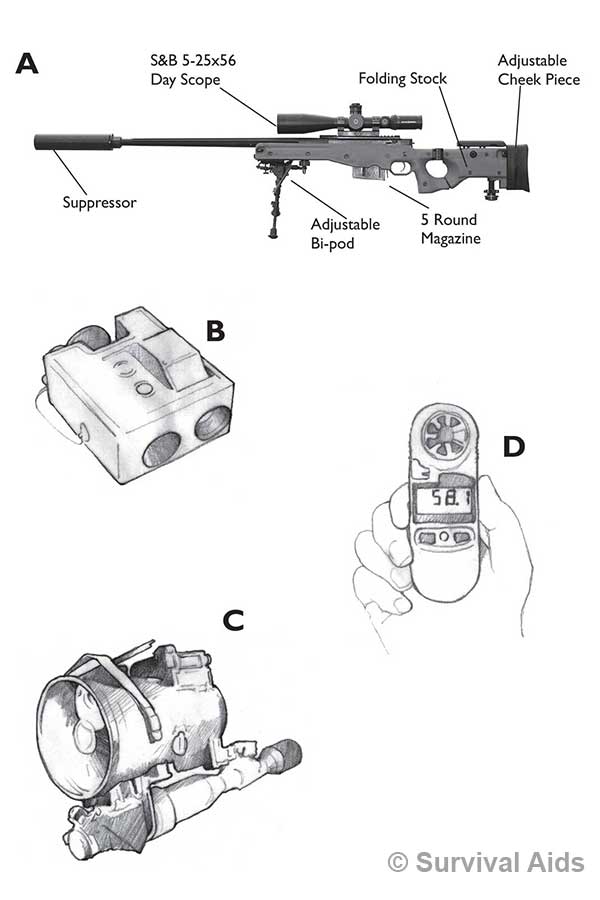
TRAINING
THE SEVEN SNIPER SKILLS
Specialist training for snipers is known as “The Seven Sniper Skills.” These skills are illustrated as steps, each one leading to the next. Every skill and step is important, for example, unless preparation and map study in the selection of the route is done well, the sniper may not reach his objective to use his others skills. All the skills are important and the sniper must master them all.
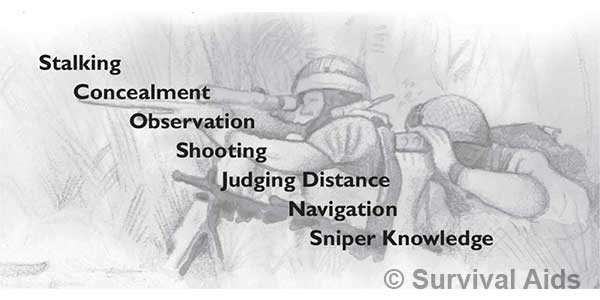
SNIPER MARKSMANSHIP
MPI . . . . . . .Mean Point of Impact (The centre of the group)
POA . . . . . .Point Of Aim
POI . . . . . . .Point Of Impact
CZP . . . . . .Correct Zero Point – Where the rounds should land when zeroing (L115A3 = POA/POI)
ESA . . . . . .Estimated/Expected Scoring Area
MOA . . . . .Minute Of Angle – A measurement of 1/60 of a degree. Each MOA is equivalent to 25mm per 100 yards or 30mm per 100m. The L115A3 Schmitt and Bender sniper scope is calibrated in 1 MOA increments
MIL RAD . .The 5x25 56mm Power Variable Schmitt and Bender Sight is calibrated at 1 click at 100m = 10mm
MARKSMANSHIP PRINCIPLES
- - The position and hold must be firm enough to support weapon.
- - The weapons must point now naturally at the target without any undue physical effort.
- - Sight alignment and the sight picture must be correct.
- - The shot must be released and followed through without any undue disturbance to the position.
Elements of a good shooting position:
- - Muscular relaxation
- - Bone support
- - Natural alignment onto POA
Factors common to all good firing positions:
- - Left-hand, elbow and legs.
- - The position of the butt
- - Right hand/trigger handgrip
- - Right elbow
- - Spot weld
- - Relaxation
- - Breathing
Factors affecting the application of fire:
F iring position
L ight
A ttachments
P ositional support
W ind
I nefficient zero
W et and oily ammo or chamber other conditions.
OTHER CONDITIONS
Temperature, humidity, rain, clothing
Windage: Factors affecting the determination of wind:
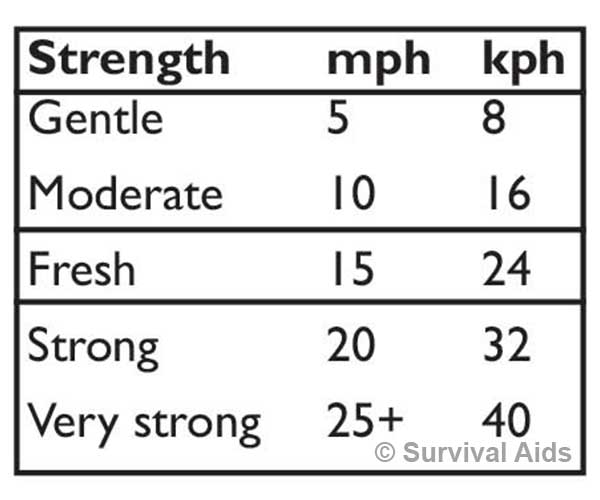
- - Strength of the wind
- - The direction of the wind
- - Range to the target.
Strength of the wind - Determining wind strength or velocity is the first step in calculating how much a bullet may be deflected. There are 5 recognised wind strengths.
Mirage - when present, is an excellent aid to judge wind velocity up to approximately 20kph. It can be seen all the way down the range and is enhanced with the use of binos or spotting scope.
Some mirage patterns are:
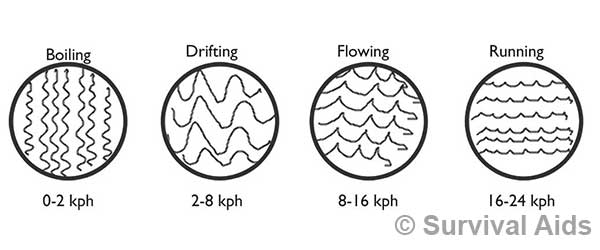
Distance to the target - Knowing the distance to the target is important when making bullet deflection calculations. The further the distance the longer the bullet is in the air. This gives more time for the wind to deflect the bullet. The bullet takes approximately 1 second to fly 600m and nearly 2 seconds to reach 1000m.
METHODS OF DETERMINING WIND DIRECTION
- - Flags method
- - Wind direction indicators
- - Observation method
- - Pointing method
- - Mirage
- - Sight, feel, sense, calibration
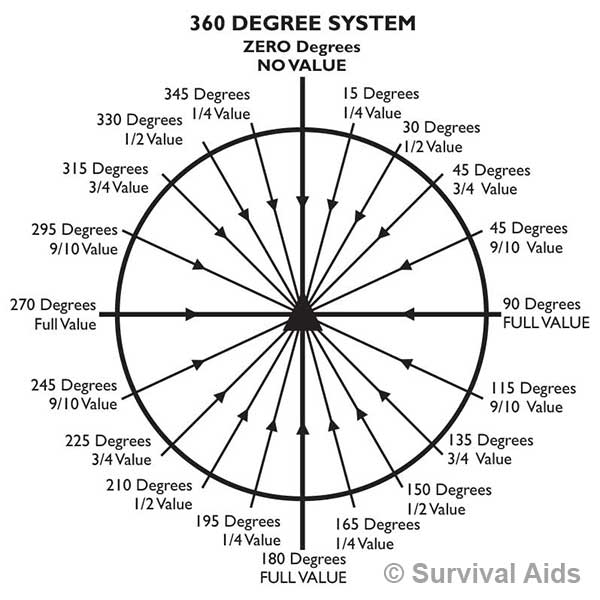
Sequence
Range to target - Wind Strength - Wind Direction, Sight Adjustment
Moving target engagement
Factors affecting engaging moving targets: Range to target. As the range increases to a moving target so will the lead as long as the target moves at the same speed.
WIND
First site setting is for elevations (range) and deflection (wind) of a static target. After sight setting workout calculation from moving target. The 3 methods we use are ambushing, tracking or dialling the lead on the scope.
Direction the target is moving
Crossing at 90° requires four lead on the target. Crossing obliquely requires half the value of the full lead. Directly toward you or away needs no lead. Correct elevation (range) is important.
Speed of the target
Walking men - 3 mph/5 Kph
Jogging man - 6 mph/10 kph
Running man - 9 mph/15 kph
These are generic speeds for the average man. Hitting moving targets requires practice to become competent. Be prepared to miss and follow-up with further shots.
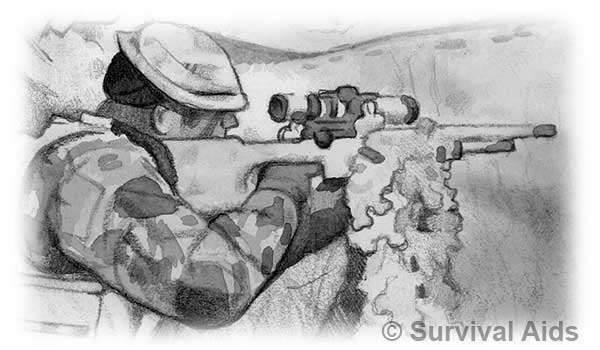
AMBUSHING METHOD
When ambushing we apply the lead worked out and when the target reaches the lead point we engage. The easiest way to do this is to pick a point to which the target is travelling, place the lead on that point then when the target reaches it engage.
THE ‘COLD BORE’ SHOT
A ‘Cold Bore’ shot is the first shot fired after the bore has been cleaned, or after the rifle has been stored dirty for an extended period of time. The cold bore shot is the most important round we will ever fire. The sniper must be able to predict where his cold bore shot is going to go as more than likely this will be the most important round he fires
Rifle cleaning Notes:
- - Barrel life 8.59mm - 2500-3000 rounds
- - Suppressor life 2000-2500 rounds
- - For 7.62mm - barrel to be pulled through after 100 rounds Ball 50 rounds AP
- - For 8.59mm - barrel to be pulled through after 50 rounds Ball 25 rounds AP
OPERATIONAL STALKING
The Aim of Stalking - Is to be able to get to your target without being seen, engaging the target & extracting undetected.
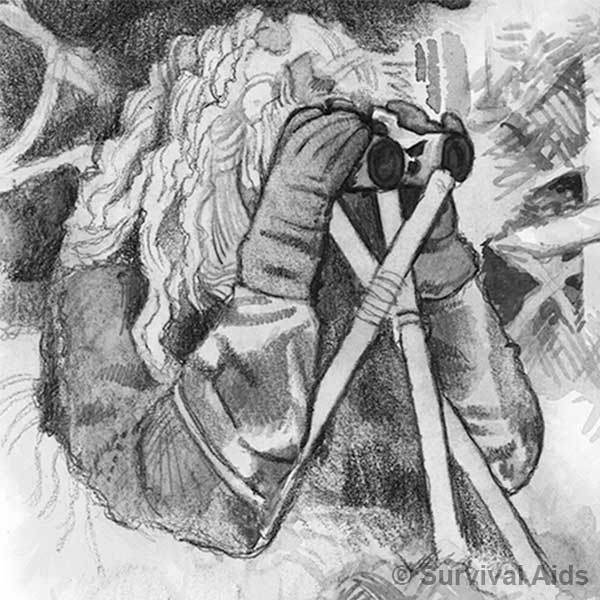
Movement - Violates a principle of concealment – but a sniper must get within range of his target. Skilled stalking enables a sniper to move unseen. Remember a sniper is at his most venerable whilst moving. When possible a sniper moves in Darkness, fog, smoke or haze but if none of the above are available you still need achieve your mission.
Intelligence- Before stalking the sniper must know the following:
E nemy position and
L ine of advance and withdrawal including Observation point to PID enemy position
F inal Firing Position (FFP)
Factors to consider before a stalk:
P loughed fields. Move with the direction of the furrows, ensure you don’t become isolated and all actions on are considered before entering the furrows.
W ildlife. Avoid if possible, having an understanding of how different animals react to human presence whether it’s a wild animal, pets or livestock will help you to make an assesment.
C amouflage. Personal camouflage to be checked frequently and changed with the local foliage.
A ction. Sequence of actions – the sniper will stop, listen, observe and move. Consider all actions on throughout.
M ovement. By doing a detailed map study of the area and considering air photos, understanding exactly what the enemy can see, so the sniper already knows when he can walk, crawl when going into an exposed area.
D irectional changes. Changing your direction as often as possible and covering your tracks.
R oads & Tracks. Do not move along roads and tracks. Cross at bends and always assume they are covered by fire
A dvantage of noise. Use noise as a distraction.
S teep slopes. Avoid steep slopes where possible as forward slopes will increase the chance of a snipers position being detected and the crests will skyline your location.
S ilhouette. Be aware of your backdrop at all times.
Factors to consider during the stalk:
R isks, if taken are to be taken early and only once the enemy position has been identified.
E xposure. If compromised, the sniper must decide on “flight or fight”, he should decide if there is any chance that he will now be able to complete the mission.
D isturbed wildlife. Caution must be taken as disturbed wildlife, livestock and domestic could draw attention of the enemy.
S ense of direction. The sniper must know where he is and where he is going at all times. He may use compass and landmarks to aid him.
O bservation. He must set observation points to locate the enemy through the operation also ensuring maintain a 360Deg situation awareness.
A lertness is required throughout the operation and the sniper must be prepared and have a thorough understanding of all action for every eventuality.
P ersonal camouflage. Personal camouflage must be checked and renewed regularly.
Factors to consider during a night stalk:
M aintain direction. Using compass, stars and landmarks.
A imed fire. Remember judging distance and target acquisition becomes a lot more difficult. Darkness is a double edge sword.
S ilhouette. Cover is less important than backdrop at night, so crests and skylines should be avoided.
S ilence. Hearing becomes the primary sense at night. Be aware of the sound of your own movement make it difficult for the enemy to acquire you with accurate fire.
JUDGING DISTANCE
METHODS
- - Unit of measure
- - Appearance
Techniques:
- - Bracketing
- - Halving
- - Key range
- - Unit average
- - Map and air photo
- - Optical aids
- - Laser range finders
- - Binoculars - Stadia lines
- - Spotting scope Mil Dot
The Mil Dot system: The Mil Dot system allows quick and accurate estimations of range without having to break five positions.
Range finding stadia lines: Also allows a quick and accurate range estimation using the weapons sighting system.
Range estimation is using the binoculars and the Mil Dot system requires two pieces of information:
- - Known height of target in metres (Accurate to .25 of a meter)
- - The estimated height of the target in Mils.
Once the two pieces of information are available simple formula is applied to acquire the range to target
Known the Height of target in Metres x 1000 Graticule measurement in Mils = Range in Metres
OBSERVATION/TARGET DETECTION, SELECTION,INDICATION, INDEXING
- - Why things are seen
- - Shape
- - Silhouette
- - Texture
- - Shadow
- - Shine
- - Spacing
- - Movement
- - Target Detection
- - Movement
- - Sound
- - Improper camouflage
- - Surface/Shine/Glint
- - Outline
- - Contrast
- - Smoke
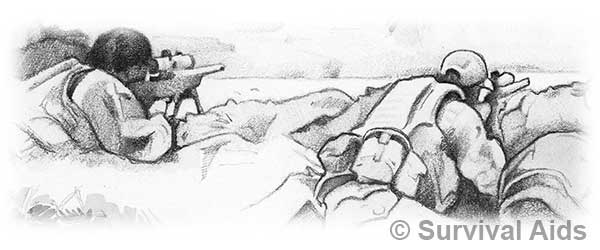
THE CRACK THUMP METHOD
When using the crack thump method, the sniper team is listening for the crack of the round passing overhead at supersonic speed and the thump of the discharge of the weapon being fired. This method will indicate both distance and direction to the firer.
Distance to the firer - The time distance between the crack and the thump can be converted into an approximate range. A one-second laps between the two constitutes a distance of about 600 metres with most calibre weapons. Following this formula a half second would be about 300 metres.
Determining direction - It is natural to look in the direction of the crack. Instead, there should be a signal to prepare the senses to pick up the softer and less distinct thump, in order to determine its origin.
Locating the firer - By observing in the direction of the thump and near the predetermined range, the sniper may be able to see the muzzle flash or blast of the enemy’s weapon from a second or third shot.
Limitations: some conditions are not conducive to the use of the crack thump method, isolating particular crack and thump is difficult in this situation where there are numerous shots being fired. Areas with mountains, tall buildings, etc., will cause echoes, rendering this method ineffective.
MECHANICAL MEANS OF TARGET DETECTION
- - Dummy targets
- - Periscopes
- - Shot analysis
- - Shot detection electronic systems
Considerations before engagement
- - Distance
- - Multiple targets
- - Equipment as targets
- - Information collection
Target selection
- - Snipers
- - Officers and NCOs
- - Signallers/specialists
- - Crew served weapons
- - Equipment
- - Optics
- - Helicopters (ground or hovering)
TARGET INDICATION
R - Range
I - Indication
D - Deflection
A - Aim
C - Confirmation
T - Time To Fire.
AFTER THE SHOT
- - Follow-through
- - Engage other targets
- - Withdrawal
- - No more than three shots from one position
INDEXING TARGETS
- - Consider:
- - Exposure time
- - Number of targets
- - Distance between targets
- - Evaluating aiming points
- - Co-ordinated shoot
CO-ORDINATED SHOOTING
- - Applications
- - Ambush
- - Deception
- - Priority target engagement
- - Multiple target engagement
PRINCIPLES:
- - Range
- - Planning
- - Maximum rifles
- - Interlocking arcs
- - Two rifles to one target
- - Simplicity
- - Flexibility
- - Synchronisation
- - Rehearsals
COUNTER SNIPING
Identification of Enemy Snipers. The identification of an enemy sniper threat is the first stage of counter-sniper operations. Enemy snipers can be recognised by some or all of the following:
- - Sniper rifles.
- - Small groups of enemy seen in special camouflage.
- - Secondary weapons carried in protective cases.
- - Single-shot precision fire, especially directed towards commanders or specialist equipment.
- - Single empty cases of different grain ammunition found.
TYPES OF SNIPER:
- - The well-trained sniper
- - The trained marksmen
- - The armed/irregular gunmen.

OBSERVATION PROCEDURES
The following sequence should be employed by the sniper from his observation point:
GENERAL
As soon as the soldier arrives at his observation position he should commence to search the chosen area. To check for immediate danger a hasty search is carried out, followed by a detailed search. A range card should then be made out.
HASTY SEARCH
A rapid search conducted when a sniper arrives in position and looks for likely enemy positions
DETAILED SEARCH
A systematic examination of the snipers arc of responsibility broken down into a logical sequence starting from near, centre, middle and far.
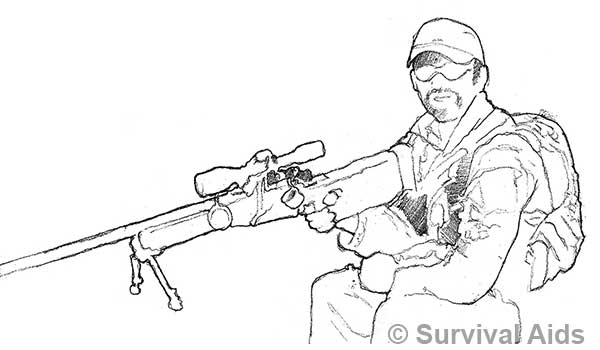
MAINTAINING OBSERVATION
After completing his detailed search and his range card, the soldier must continue to keep the area under observation.
To do this, he should use a method similar to the hasty search but examine specific features in a sequence.
This will ensure that all features are covered.
A detailed search should periodically be repeated.
As snipers will almost always work in pairs, they will take turns maintaining observation in order to reduce eye fatigue.
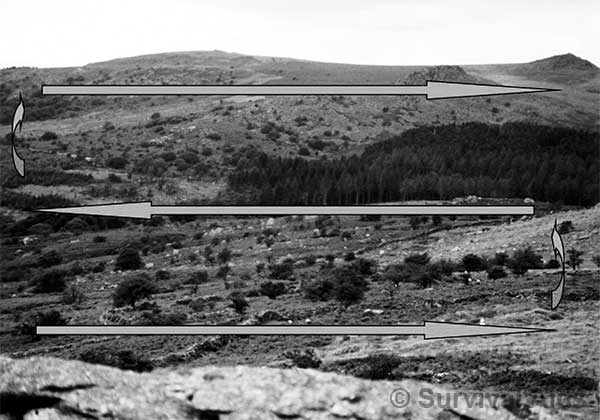
SUMMARY
Snipers are a cost-effective capability, which has utility throughout the spectrum of conflict. This tactical doctrine note provides commanders at all levels, with or without experience of snipers, the fundamental tasks, roles and capabilities of snipers on operations.
They have the ability to render elements of an enemy unit unwilling to move through panic and fear and cause a consequent reduction in the tempo of enemy operations. This is only possible through the correct selection and training of snipers; the provision of necessary equipment to support their activities and, most importantly, a thorough understanding of how they should be tactically employed by commanders at all levels.



